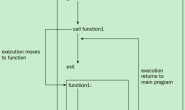一,引言
之前我们在使用 Terraform 构筑一下 Azure 云资源的时候,直接将所以需要创建的资源全面写在 main.tf 这个文件中,这样写主要是为了演示使用,但是在实际的 Terraform 代码的整个项目代码结构是需要封装具体的 “Module”,这里提到了 ”Module“ 也就是新的概念 “Common Module”。“Common Mudule” 其实对于开发来说,其实就是封装的 ”类库“,通过传递不同的参数,调用方法,来实现不同的返回值;同理,terraform 的 common moudle 也是一样的。
以下是 Terraform 项目结构

——————–Azure Terraform 系列——————–
1,Azure Terraform(一)入门简介
2,Azure Terraform(二)语法详解
3,Azure Terraform(三)部署 Web 应用程序
4,Azure Terraform(四)状态文件存储
5,Azure Terraform(五)利用Azure DevOps 实现自动化部署基础资源
6,Azure Terraform(六)Common Module
7,Azure Terraform(七)利用Azure DevOps 实现自动化部署基础资源(补充)
8,Azure Terraform(八)利用Azure DevOps 实现Infra资源和.NET CORE Web 应用程序的持续集成、持续部署
二,正文
1,Terraform 资源 Moudle 结构定义
按照资源划分,将每种类型的资源划分为单独的 “Common Moudle”,比方 “资源组”,“流量管理配置”,“Web 应用程序”……
mian.tf:不是项目的入口,该文件中包含了特定资源中的通用资源文件。
resource "azurerm_traffic_manager_profile" "cnbate_traffic_manager_profile" { name = var.traffic_manager_name resource_group_name = var.resource_group_name traffic_routing_method = var.traffic_routing_method dns_config { relative_name = var.relative_name ttl = var.ttl } monitor_config { protocol = var.protocol port = var.port path = var.path interval_in_seconds = var.interval_in_seconds timeout_in_seconds = var.timeout_in_seconds tolerated_number_of_failures = var.tolerated_number_of_failures } tags = var.tags } resource "azurerm_traffic_manager_endpoint" "cnbate_traffic_manager_endpoint" { count = var.enable_traffic_manager_endpoint && var.traffic_manager_endpoint_count > 0 ? var.traffic_manager_endpoint_count : 0 name = element(var.traffic_manager_endpoint_names, count.index) resource_group_name = var.resource_group_name profile_name = azurerm_traffic_manager_profile.cnbate_traffic_manager_profile.name target_resource_id = element(var.target_resource_ids, count.index) type = var.traffic_manager_endpoint_type geo_mappings = element(var.geo_mappings, count.index) }
outputs.tf :包含部署输出变量的定义
################################ traffic manager profile ################################ output "traffic_manager_profile_name" { value = azurerm_traffic_manager_profile.cnbate_traffic_manager_profile.name } output "traffic_manager_profile_id" { value = azurerm_traffic_manager_profile.cnbate_traffic_manager_profile.id } ################################ traffic manager profile ################################ output "azurerm_traffic_manager_endpoint_names" { value = azurerm_traffic_manager_endpoint.cnbate_traffic_manager_endpoint.*.name } output "azurerm_traffic_manager_endpoint_ids" { value = azurerm_traffic_manager_endpoint.cnbate_traffic_manager_endpoint.*.id }
variables.tf:包含了当前资源所封装的变量的定义
################################ traffic manager profile ################################ variable "traffic_manager_name" { type = string description = "(required)The name of the traffic manager profile" } variable "resource_group_name" { type = string description = "The Name which should be used for this Resource Group. Changing this forces a new Resource Group to be created." } variable "traffic_routing_method" { type = string description = "(required) Specifies the algorithm used to route traffic" } variable "relative_name" { type = string description = "(required) The relative domain name, this is combined with the domain name used by Traffic Manager to form the FQDN which is exported as documented below." } variable "ttl" { type = number description = "(Required) The TTL value of the Profile used by Local DNS resolvers and clients" } variable "protocol" { type = string default = "http" description = " (required) The protocol used by the monitoring checks, supported values are HTTP, HTTPS and TCP." } variable "port" { type = number default = 80 description = "(required) The port number used by the monitoring checks." } variable "path" { type = string default = "/" description = " (optional) The path used by the monitoring checks. Required when protocol is set to HTTP or HTTPS - cannot be set when protocol is set to TCP." } variable "interval_in_seconds" { type = number default = 30 description = "(optional) The interval used to check the endpoint health from a Traffic Manager probing agent." } variable "timeout_in_seconds" { type = number default = 10 description = "(optional) The amount of time the Traffic Manager probing agent should wait before considering that check a failure when a health check probe is sent to the endpoint. " } variable "tolerated_number_of_failures" { type = string default = 3 description = "(optional) The number of failures a Traffic Manager probing agent tolerates before marking that endpoint as unhealthy. Valid values are between 0 and 9." } variable "tags" { type = map(string) description = "(optional) A mapping of tags to assign to the resource." } ################################ traffic manager endpoint ################################ variable "enable_traffic_manager_endpoint" { type = bool default = false description = "(required) whether to create traffic manager endpoint" } variable "traffic_manager_endpoint_count" { type = number default = 0 description = "(required) number of create traffic manager endpoint" } variable "traffic_manager_endpoint_names" { type = list(string) description = "(required) The name of the Traffic Manager endpoint." } variable "target_resource_ids" { type = list(string) description = " (optional) The resource id of an Azure resource to target. This argument must be provided for an endpoint of type azureEndpoints or nestedEndpoints." } variable "traffic_manager_endpoint_type" { type = string description = "(required) The Endpoint type, must be one of: 1:azureEndpoints,2:externalEndpoints,3:nestedEndpoints" } variable "geo_mappings" { type = list(list(string)) description = "(Optional) A list of Geographic Regions used to distribute traffic, such as WORLD, UK or DE. " }
2,资源 Module 引用
将 terraform 项目所封装的 common module 在一个主 mian.tf 进行引用的时候,使用 module
根据模块的位置以及使用该模块的位置,该 source 参数可能有所不同
module "cnbate_Web_app" {
source = "../module/web_app" app_service_locations = [local.location_eastAsia, local.location_southeastAsia] resource_group_name = data.azurerm_resource_group.cnbate_resource_group.name enable = var.enable enable_app_service_plan = var.enable_app_service_plan app_service_plan_count = var.app_service_plan_count app_service_plan_names = var.app_service_plan_names app_service_plans = var.app_service_plans enable_app_service = var.enable_app_service app_service_count = var.app_service_count app_service_names = var.app_service_names app_settings = var.app_settings }
如果模块之间由相互依赖引用,则通过 “module” 引用的方式来建立关系,同时 terraform apply 在执行部署计划的时候,terraform 也会遵循这个依赖关系先后创建资源
module "cnbate_traffic_manager" { source = "../module/traffic_manager_profile" traffic_manager_name = var.traffic_manager_name resource_group_name = data.azurerm_resource_group.cnbate_resource_group.name traffic_routing_method = var.traffic_routing_method relative_name = var.relative_name ttl = var.ttl tags = var.tags enable_traffic_manager_endpoint = var.enable_traffic_manager_endpoint traffic_manager_endpoint_count = var.traffic_manager_endpoint_count traffic_manager_endpoint_names = var.traffic_manager_endpoint_names target_resource_ids = module.cnbate_Web_app.azurerm_app_service_ids traffic_manager_endpoint_type = var.traffic_manager_endpoint_type geo_mappings = var.geo_mappings }
注意,一旦依赖关系在 common module 阶段发生改变的时候,就需要重新执行 terraform init 初始化操作,导入的所有模块的配置
3,如何划分 Terraform 资源模块
common module 的划分和封装没有固定的标准,我们在划分和封装的时候要从多个角度去考虑问题
1,项目太小,只有一个 web 应用程序,是否需要封装?
2,是否必须严格讲每个 terraform resource 划分成单独的 common module?
3,封装的 common module 以及 module 引用是否满足项目架构需求?
所以,划分、封装 common module 不是必须的。只要我们能够清楚的看到实际项目的整体架构需求,是否使用模块化都是有利有弊的。大家要清楚的看到这一点。
完整代码请参考文章底部的 github 链接
三,结尾
参考资料:Terraform 官方,azurerm 文档
Terraform_Cnbate_Traffic_Manager github:https://github.com/yunqian44/Terraform_Cnbate_Traffic_Manager
作者:Allen
版权:转载请在文章明显位置注明作者及出处。如发现错误,欢迎批评指正。
,
参考资料:Terraform 官方,azurerm 文档
Terraform_Cnbate_Traffic_Manager github:https://github.com/yunqian44/Terraform_Cnbate_Traffic_Manager
作者:Allen
版权:转载请在文章明显位置注明作者及出处。如发现错误,欢迎批评指正。




